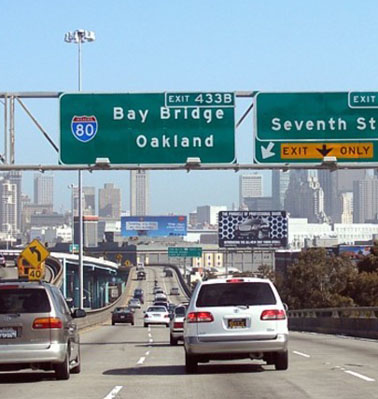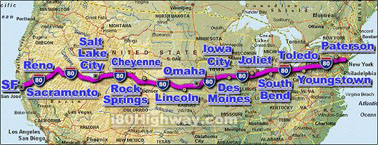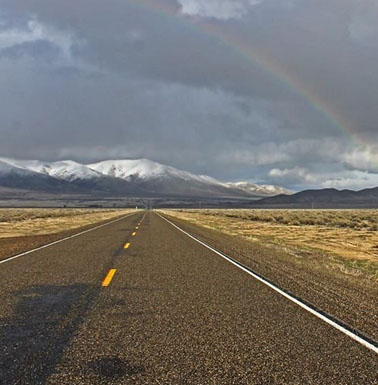COVID-19 reflections on “Classified project; Nevada Desert” (turns out a lot of people like working from home?)
Apr 6th, 2020 | By L. Frank Bunting | Category: In Brief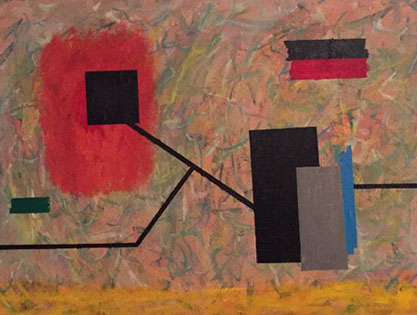
Our spies in the Golden State North have sometimes lately alluded to a possible great trek east out of San Francisco along US Interstate Highway 80, in search of better ground.
The concept is not unique. As long ago as March 22 the Los Angeles Times was reporting : “As the coronavirus pandemic tightens its grip on California’s largest cities, some residents are fleeing urban sprawl and seeking shelter in isolated communities in the Mojave Desert or rugged Sierra Nevada.”
There is something similar afoot in Southern Ontario’s Greater Toronto Area (GTA), where I spend most of my own time. On March 30 Global News reported that “Amid the COVID-19 pandemic, Ontario’s Muskoka District has seen an increase in human traffic from its seasonal residents, leaving some officials concerned that the region’s hospitals won’t be able to support the increased population.”
In Los Angeles Mayor Eric Garcetti finally announced that residents are “forbidden from moving to or from vacation homes outside the city.” Many miles/kilometres east and north, “Ontario Premier Doug Ford” has “asked urban residents to avoid heading to their cottages during the COVID-19 outbreak.”
My own somewhat different speculations on a move east from San Francisco, along US Interstate Highway 80 (or I-80 as the locals say), began a while ago, with an imaginary rental truck odyssey from the Embarcadero at the edge of the SF downtown to Cheyenne, Wyoming.
I was subsequently informed that Auburn, California might make more sense. (It’s still within the “higher-order”service-sector of the Sacramento metropolitan area, which is also home to the state capital. And it’s still considerably closer than Cheyenne, Wyoming to the San Francisco Bay Area, where you might have to appear in person from time to time for business.)
For me in any event the exercise has brought into clearer focus the fresh fascination of I-80 – which ultimately goes all the way from San Francisco on the Pacific to Teaneck Township, New Jersey on the Atlantic.
According to Wikipedia, I-80 is also known as the Dwight D. Eisenhower Highway “in California, Nevada, Utah and Wyoming.” And Eisenhower did sign the Federal-Aid Highway Act of 1956, which paid for what has become the Interstate Highway System – “a great web” of more than 46,000 miles of “federally funded freeways” that crisscrosses the USA today.
The concept of this vast public works project apparently had its origins in Franklin Roosevelt’s 1930s New Deal. But the Republican President Dwight Eisenhower was helpfully enthusiastic in the 1950s, when work on the Interstate System finally began.
(If the present-day bureaucrats at the Federal Highway Administration of the US Department of Transportation are to be believed : “President Eisenhower considered it one of the most important achievements of his two terms in office, and historians agree.”)
In California construction on I-80 (just one long freeway in the great web that crisscrosses the USA today) began shortly after Eisenhower signed the Federal-Aid Highway Act of 1956. I-80’s ultimate route, however, crossed over the legendarily tricky Sierra Nevada mountains, between the California Central Valley and the Great Basin desert of Nevada. And : “Construction through the Sierra occurred mostly in the early 1960s. The highway was not completed until 1964.”

It’s at this point that I suddenly remember the great trek east out of San Francisco along I-80, to which our spies in the Golden State North have lately been sometimes alluding, probably has deeper motivations than the short-term quest for safety from COVID-19.
The quickest way of summarizing all this may be a March 30-April 2 poll by the Gallup organization. It reports that “American workers are increasingly doing their jobs from home as a result of the coronavirus crisis, and the latest Gallup Panel data show that they are warming up to the experience.”
The report goes on : “Sixty-two percent of employed Americans currently say they have worked from home during the crisis, a number that has doubled since mid-March.”
Moreover : “Three in five U.S. workers [59%] who have been doing their jobs from home during the coronavirus pandemic would prefer to continue to work remotely as much as possible, once public health restrictions are lifted. In contrast, 41% would prefer to return to their workplace or office to work, as they did before the crisis.”
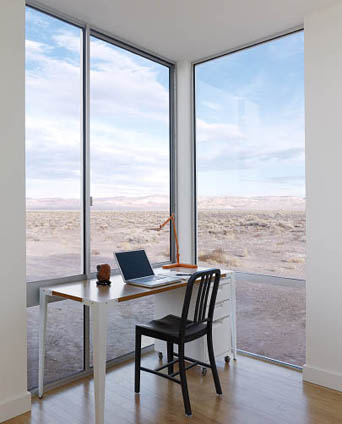
So … suppose you ordinarily work at your hi-tech job in San Francisco or Palo Alto or Mountain View or Oakland in the Bay Area. But you’re still having trouble finding housing that can accommodate your growing family at prices you can afford (even with your hi-tech job!).
Maybe … if enough of those who want to can keep working at home most of the time once the current COVID-19 crisis is over, they could also move further away from their company offices, where housing is more affordable … And maybe the new post-coronavirus economy will finally work better, be more efficient, and even make more money …
For now of course we just have to keep dreaming about the better life on the other side. But maybe the end this time will be at least somewhat like Joseph Schumpeter’s “creative destruction” – as the great driver of economic progress. (Only better, for the great majority of we the hard-working people … from California to the New York island, and from the Great Lakes waters to the Arctic Circle too …)
